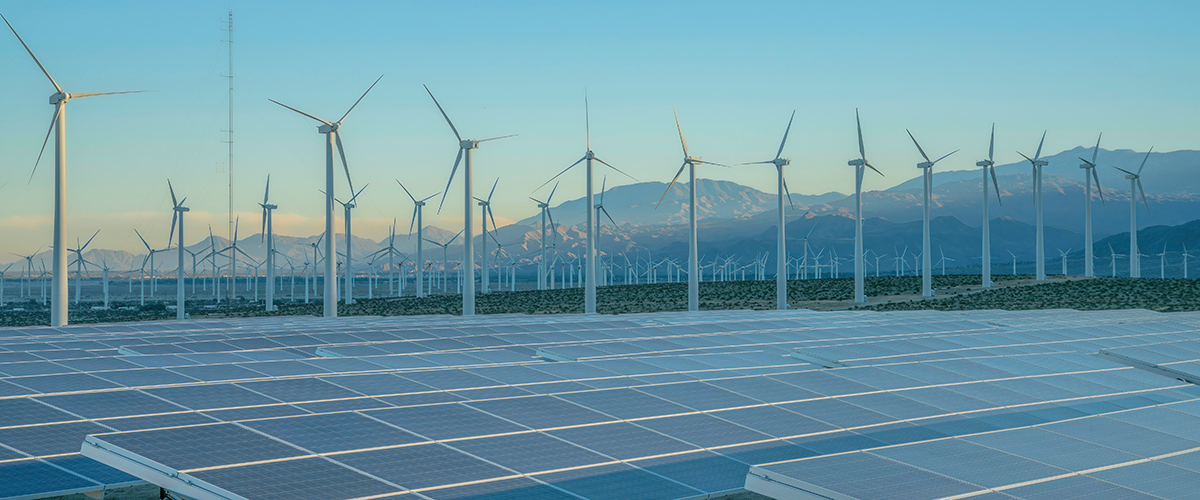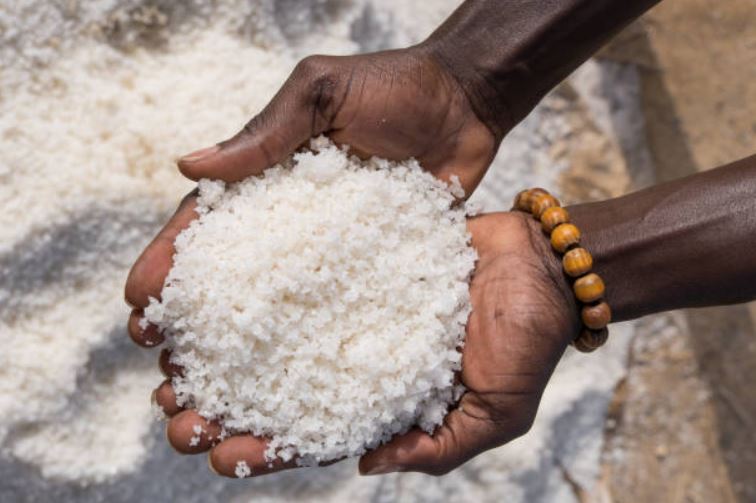Senegal is rich in natural resources, and the mining sector plays a major part, with gold contributing over 40% of total output. Sabodala is the main gold hub, producing about 5.5 tons annually.
Phosphate reserves, found in Taïba and Thiès, make up 15% of the sector’s output, with yearly production reaching 1.3 million tons. Zircon and titanium deposits along the coast have made Senegal the world’s fourth-largest zircon producer since 2014.
Offshore, the country is emerging as a major hydrocarbon player. The Sangomar oil field holds an estimated 530 million barrels of oil. Also, the Greater Tortue/Ahmeyim (GTA) gas field, shared with Mauritania, contains around 15 trillion cubic feet of gas.
Agriculture remains essential. Peanuts, the traditional cash crop, contribute about 10% to GDP. Other important crops include millet, sorghum, rice, and sugarcane. The fishing industry is just as important.
With a 448-mile coastline, Senegal exports tuna, shrimp, and sardines worth over $200 million annually. The country is also pushing forward in renewable energy. Projects like the Taiba Ndiaye Wind Park aim to generate 158 MW of electricity.
Senegal’s Natural Resources And Their Locations
Here’s a list of resources that you can find in Senegal, and their locations:
| Natural Resources | Locations |
|---|---|
| Gold | Sabodala, southeastern Senegal |
| Phosphates | Taïba and Thiès |
| Zircon & Titanium | Coastal areas near Dakar |
| Iron Ore | Upper Falémé River Valley |
| Oil | Sangomar (near Dakar) |
| Natural Gas | Greater Tortue/Ahmeyim (offshore) |
| Salt | Kaolack |
| Arable Land | Lower Casamance Valley, Sénégal River Valley below Richard-Toll |
| Fish | Atlantic Ocean Coastline |
| Forests (Timber) | Southern Senegal |
| Gum Arabic | Acacia trees in northern Senegal |
READ ALSO: Ghana’s Natural Resources: Locations, Discoveries, Export Potential, And Economic Impact
Discoveries In Senegal’s Natural Resources
Senegal’s natural resources have been uncovered over decades, turning the country into a major force in Africa’s mining and energy sectors. These are some major discoveries in Senegal’s natural resources:
| Resources | Year Of Discovery | Location |
|---|---|---|
| Gold | The early 2000s | Sabodala (southeastern Senegal) |
| Phosphates | 1940s | Taïba and Thiès |
| Zircon & Titanium | 2014 | Coastal areas near Dakar |
| Oil | 2014 | Sangomar Deep Block |
| Natural Gas | 2016 | Greater Tortue/Ahmeyim (offshore) |
| Iron Ore | 2007 | Upper Falémé River Valley |
READ ALSO: Gambia Natural Resources: Locations, Discoveries,Export Potential, And Economic Impact
Gold mining in Senegal dates back to small artisanal practices in the southeastern Kedougou region, near the borders of Mali and Guinea. For years, farmers mined gold on a limited scale, but the sector took off in the 2000s.
The turning point came in 2004 with the discovery of the Sabodala Gold Project, 650 km east of Dakar. Located in the West African Birimian geological belt, Sabodala became Senegal’s first modern gold mine, producing its first gold bars in March 2009.
It holds reserves of 24.4 million tonnes at a grade of 2.07 grams per tonne, equating to over 3.4 million ounces of gold. Today, the Sabodala-Massawa complex produces between 360,000 and 400,000 ounces annually, which has made Senegal’s largest gold mine.
Artisanal mining remains general in Kedougou, where both locals and foreigners extract gold informally. The sector contributes an estimated 387.7 billion CFA francs (€590 million) in annual production.
Phosphate mining in Senegal dates back to the colonial era, with large-scale exploitation beginning in the 1940s. The main deposits are in Taïba and Thiès, which are at the heart of the country’s mining industry.
Senegal produces around 1.3 million tons of phosphate annually. These deposits support both domestic agriculture and international markets. In 2014, extensive zircon and titanium deposits were discovered along Senegal’s coastal areas near Dakar.
The Grande Côte Mineral Sands Project pushed Senegal to the world’s fourth-largest producer of zircon. These heavy minerals are essential for industries such as ceramics and electronics.
Iron ore reserves were discovered in 2007 along the Upper Falémé River Valley in southeastern Senegal. Reserves are estimated at approximately 630 million tons, but infrastructure challenges have delayed development.
Senegal’s energy sector underwent a major transformation between 2014 and 2016 with notable oil and gas discoveries. In 2014, the Sangomar Oil Field was found offshore near Dakar, containing an estimated 530 million barrels of oil.
Production has recently begun, marking Senegal’s emergence as a hydrocarbon exporter. The 2016 discovery of the Greater Tortue/Ahmeyim Gas Field, shared with Mauritania, revealed about 15 trillion cubic feet of natural gas. This field is poised to become a major LNG export hub, with projected production of 2.5 million tons per annum.
Viability Of Senegal’s Natural Resources
As we assess Senegal’s natural resources, let’s consider their economic, environmental, and social impact.
Economic Viability Of Senegal’s Natural Resources
The economic potential of Senegal’s resources is important. Hydrocarbons, including oil and gas, are set to drive GDP growth. The Sangomar oil field and the Greater Tortue/Ahmeyim gas field will generate significant export revenue.
These hydrocarbons could boost GDP by 5%, with fiscal revenues averaging 1.5% of GDP over 25 years. Gold mining has made up over 40% of the mining sector’s output. Phosphate exports also remain a major foreign exchange source, with annual production reaching 1.3 million tons.
Environmental Sustainability Of Resource Exploitation
Sustainability is a pressing concern. Coastal erosion and climate change pose challenges, but Senegal is pushing for cleaner energy. By 2030, 40% of the country’s electricity should come from renewables.
Projects like the Taiba Ndiaye Wind Park, with a capacity of 158 MW, play an important part. Domestic gas use in power generation also cuts fossil fuel dependence.
Export Potential Of Senegal’s Natural Resources
Major export resources and their contribution:
| Resources | Export Destination | Contribution To GDP |
|---|---|---|
| Oil & Gas | Europe, Asia | ~5% of GDP |
| Gold | Global Markets | ~40% of mining output |
| Phosphates | Africa, Asia | ~15% of mining output |
| Fisheries | Europe | ~25% of total exports |
Hydrocarbon Exports: Oil And Gas
Senegal’s hydrocarbon sector plays a major part in the country’s exports. The Sangomar oil field and the Greater Tortue/Ahmeyim gas field are key assets.
Sangomar holds an estimated 530 million barrels of oil, while Greater Tortue/Ahmeyim contains around 15 trillion cubic feet of gas. LNG exports from these fields reach Europe and Asia, contributing roughly 5% to GDP.
Mineral Exports: Gold, Phosphates, Zircon
Gold mining, particularly in Sabodala, is the heart of Senegal’s mineral exports. It accounts for over 40% of the mining sector’s output and is an essential source of foreign exchange earnings.
Phosphate deposits in Taïba and Thiès support global fertilizer production. Senegal exports about 1.3 million tons annually, directly impacting international agriculture.
As we’ve said, Senegal has been the world’s fourth-largest producer of zircon since 2014. These deposits, found along the coastal areas near Dakar, are great for industrial applications, including ceramics and aerospace.
Agricultural Exports: Groundnuts, Fruits, Vegetables
Agriculture is still a pillar of Senegal’s economy. Groundnuts, a traditional cash crop, contribute around 10% to GDP. The country’s fertile regions, like the Lower Casamance Valley, also support strong exports of fruits and vegetables.
Fisheries Exports
With a 448-mile coastline, Senegal’s fishing industry thrives in the export market. Tuna, shrimp, and sardines generate over $200 million annually, with Europe as the primary destination.
Senegal isn’t yet a major renewable energy exporter, but the potential is there. Projects like the Taiba Ndiaye Wind Park show the country’s commitment to clean energy.
Economic Impact Of Senegal’s Natural Resources
But how have Senegal’s natural resources driven the country’s growth and development?
Contribution To GDP
Senegal’s natural resources are a major force in its economy. Oil and gas, particularly from the Sangomar oil field and Greater Tortue/Ahmeyim gas field contribute around 5% to GDP.
Gold mining also makes up over 40% of the mining sector’s output. Phosphates also with annual production reaching about 1.3 million tons.
Export Revenue
Gold brings in substantial foreign exchange, while phosphates are the backbone of the mining sector. The anticipated LNG exports from the Greater Tortue/Ahmeyim field will add another boost, strengthening Senegal’s trade balance. LNG alone is expected to generate huge revenue to reinforce fiscal stability and long-term economic growth.
Job Creation And Infrastructure Development
The mining and energy industries provide thousands of jobs. In Sabodala, gold mining presents employment to many locals. Resource extraction also powered infrastructure projects, improving roads, ports, and transportation networks. This development doesn’t just benefit mining, it supports agriculture, manufacturing, and trade.

